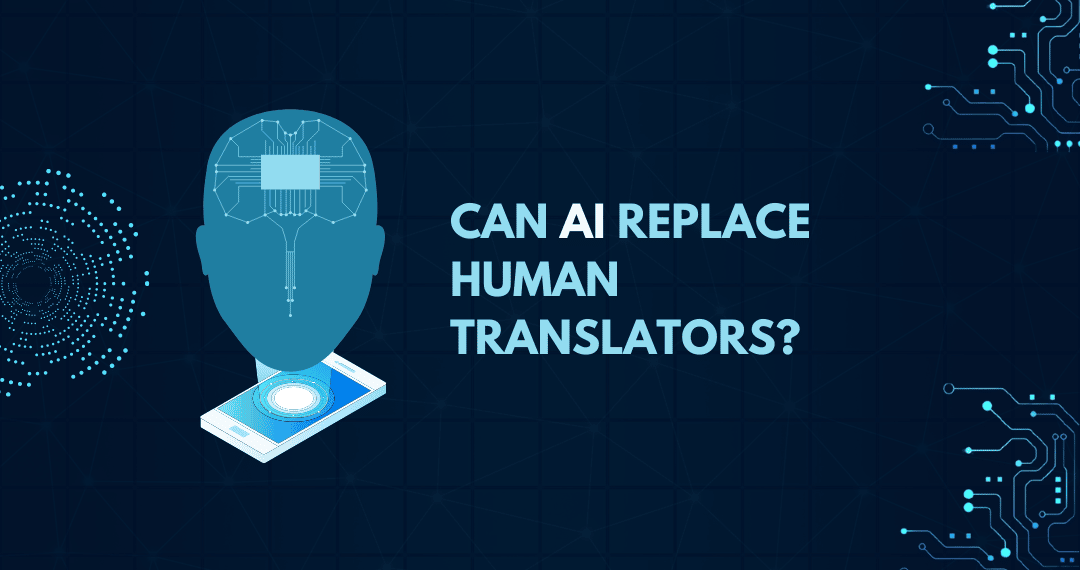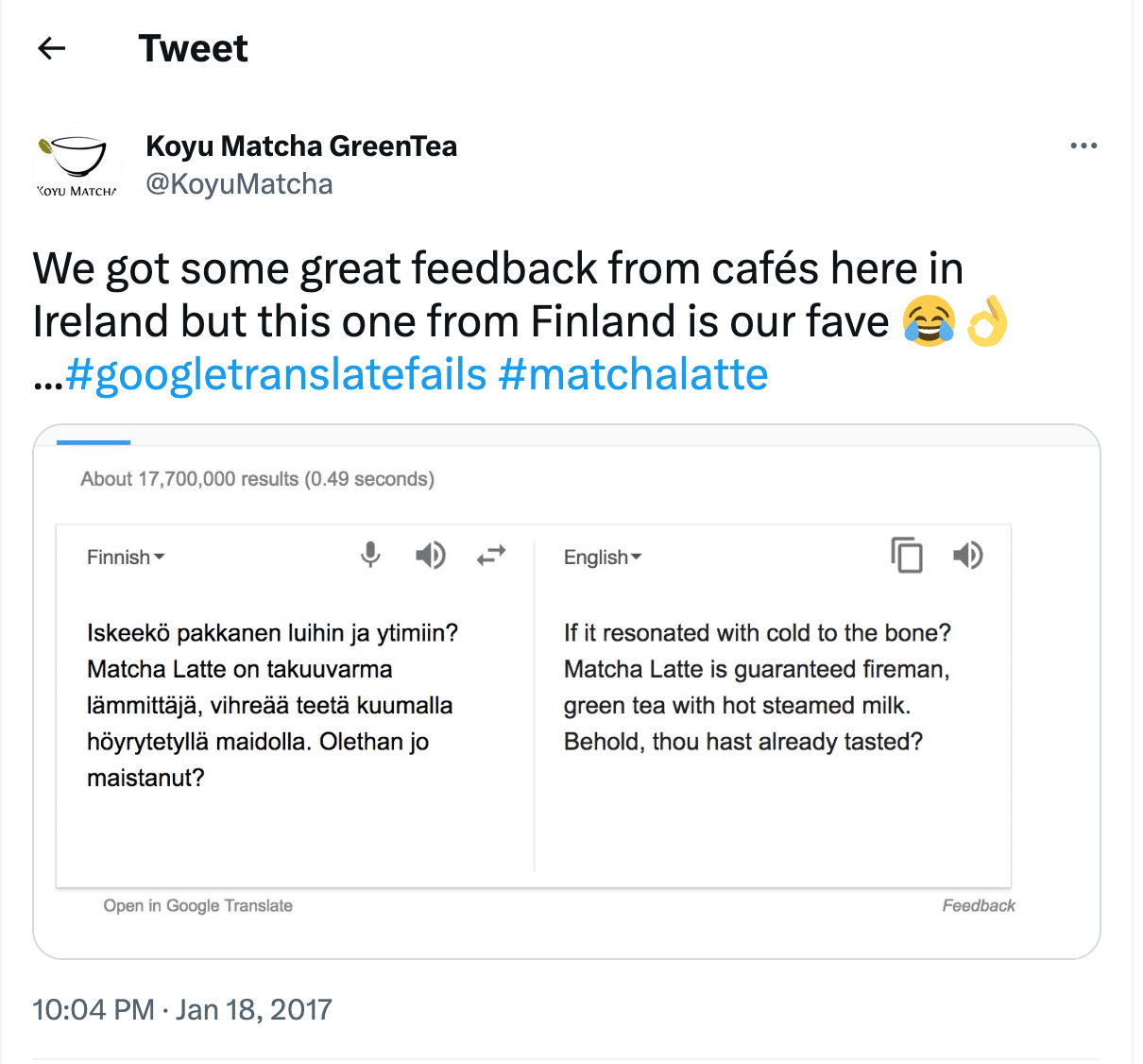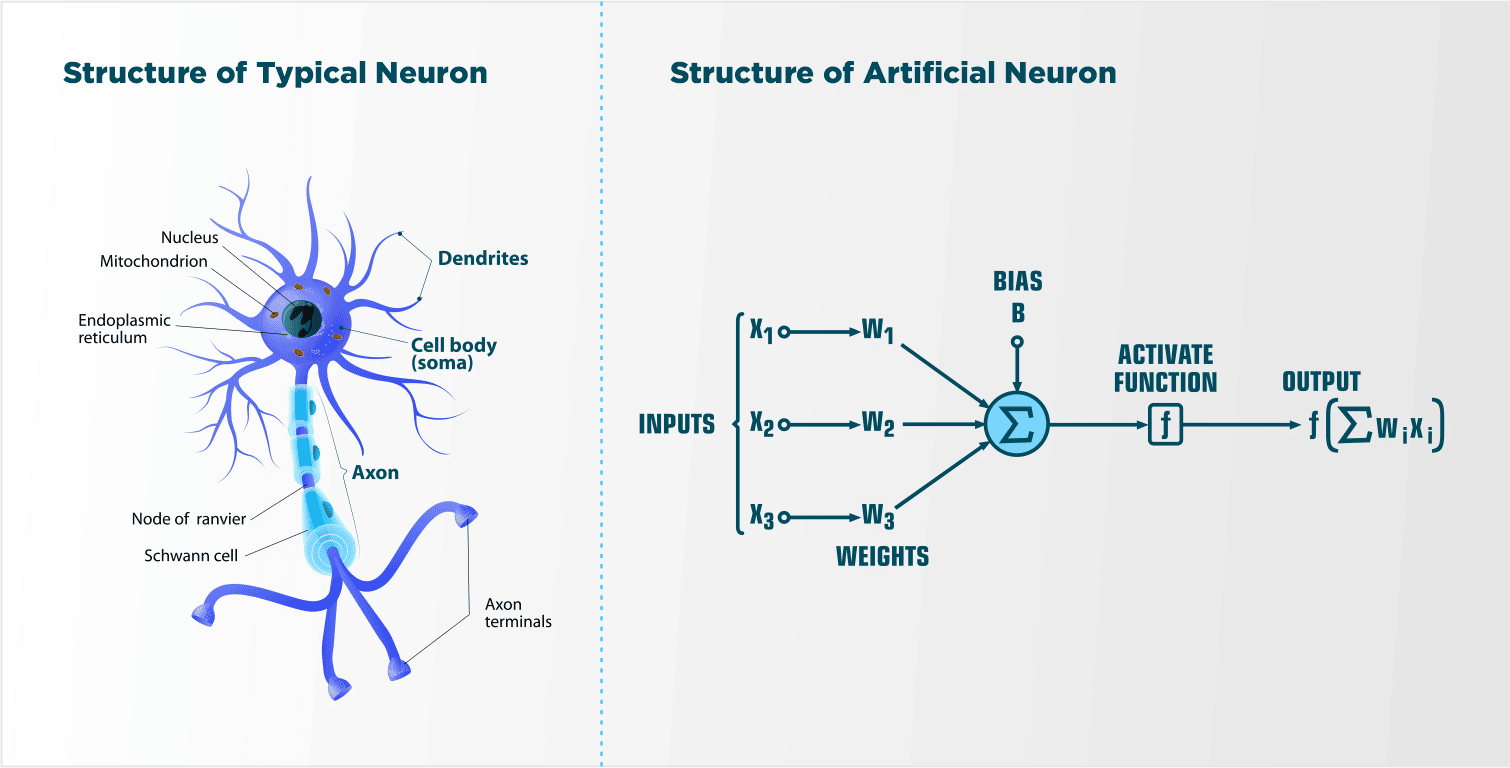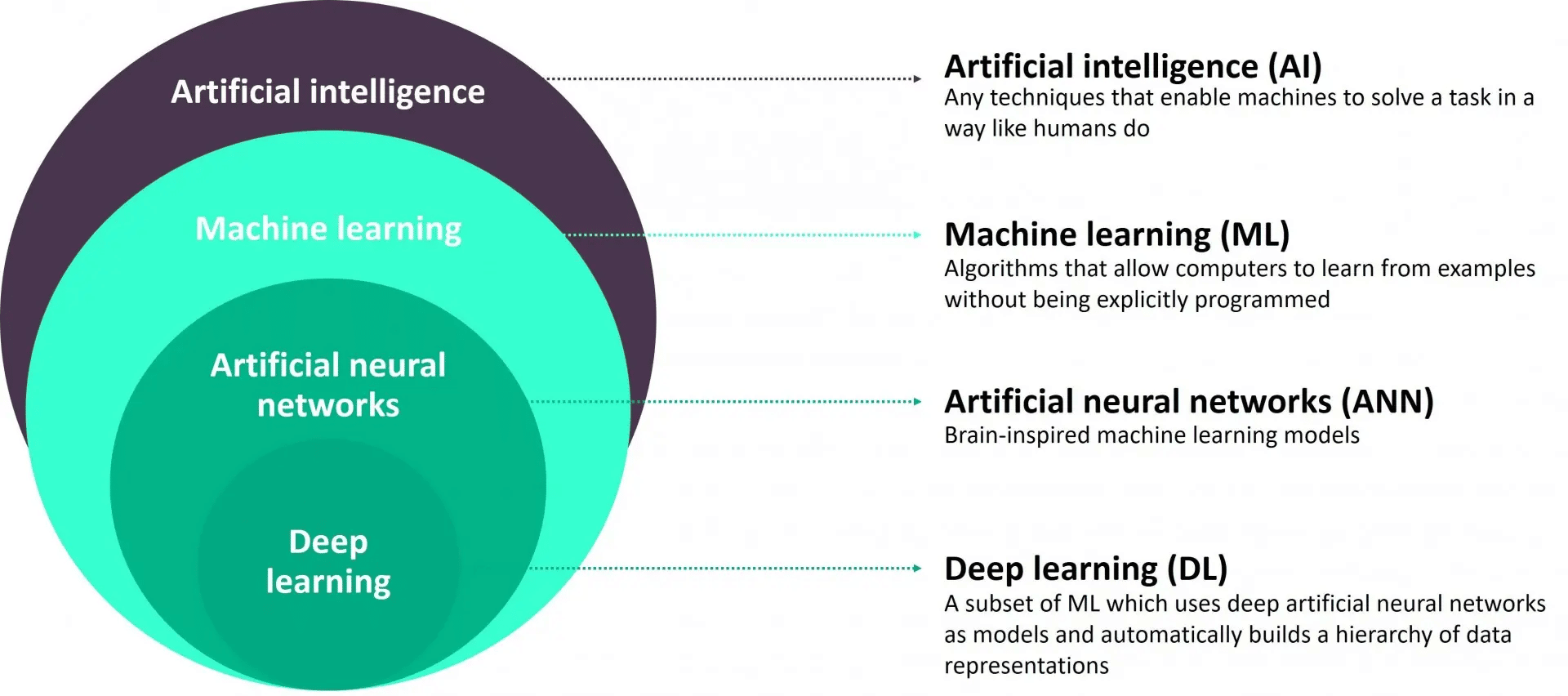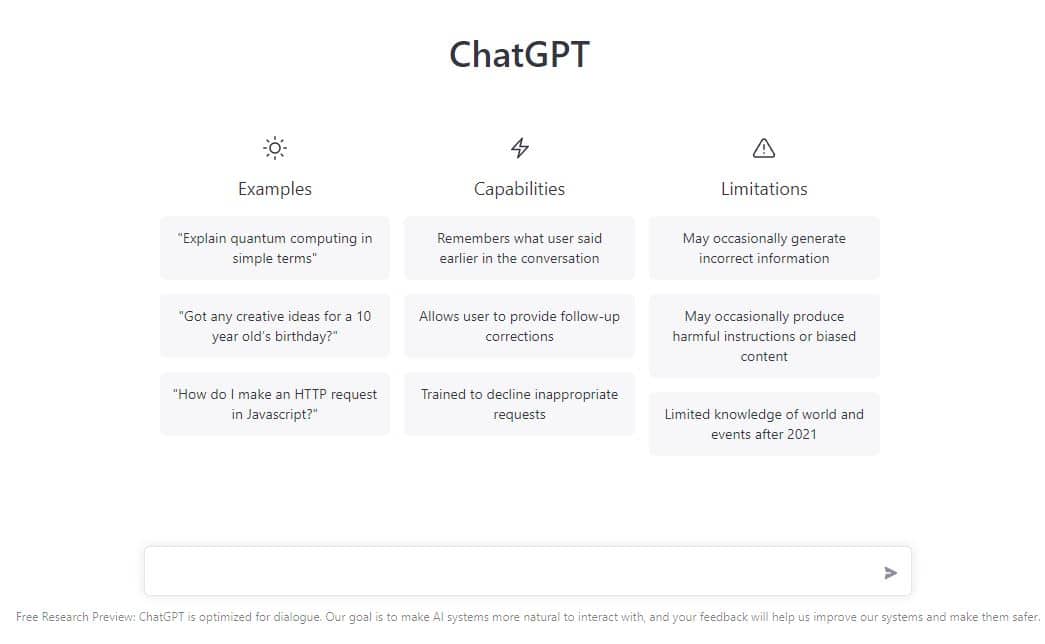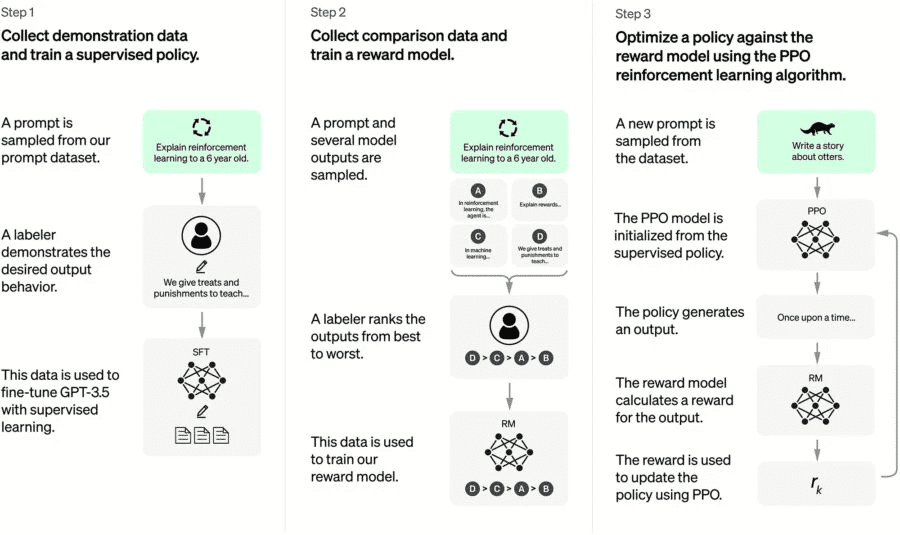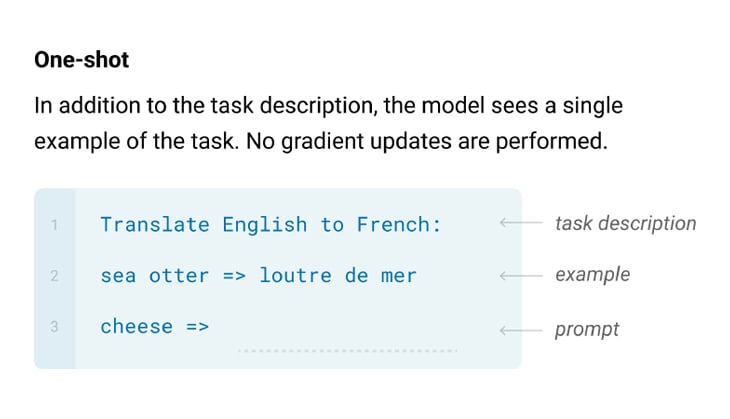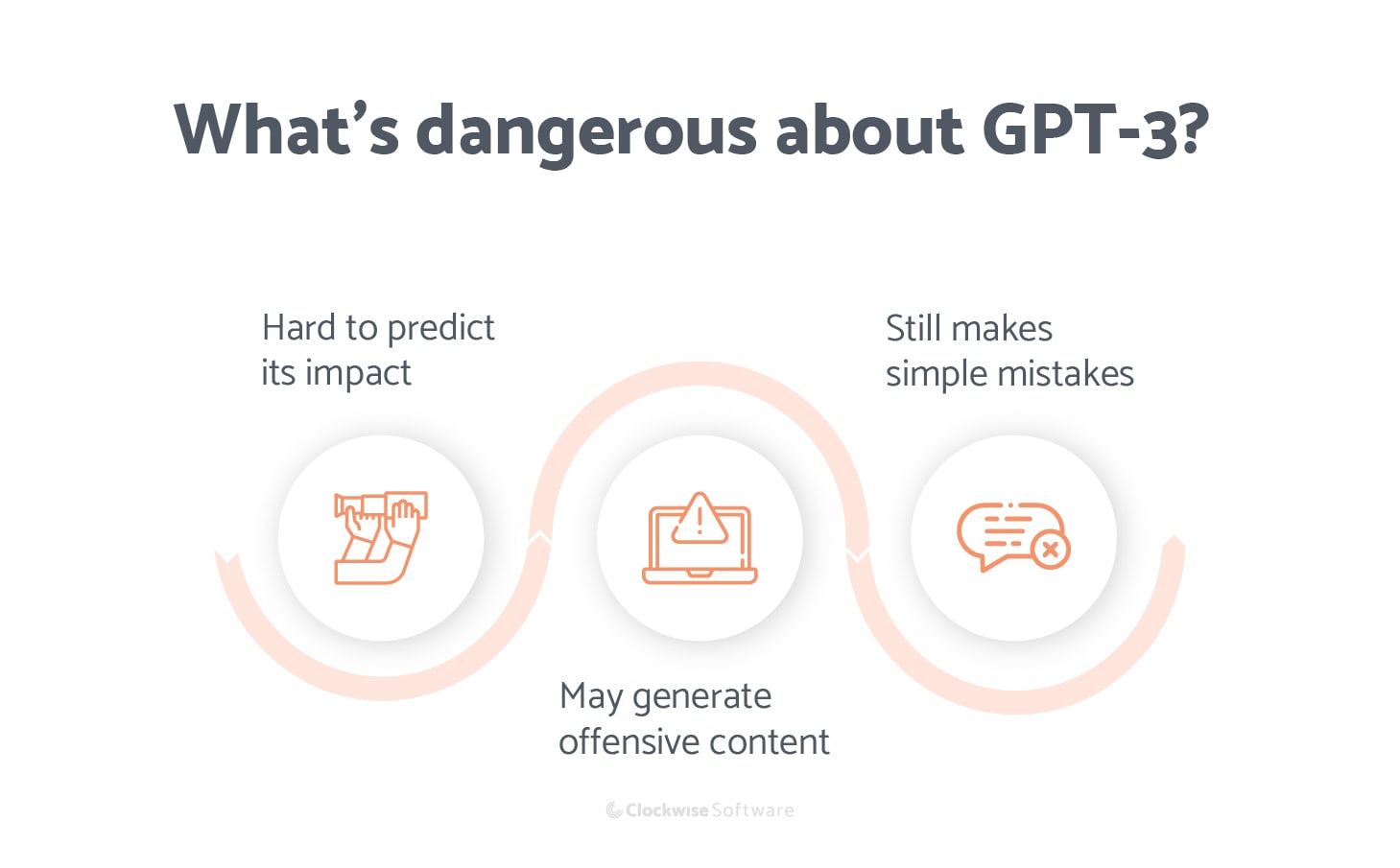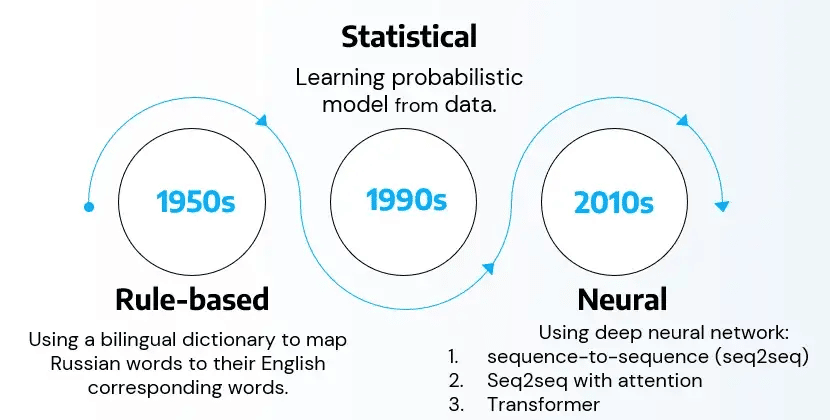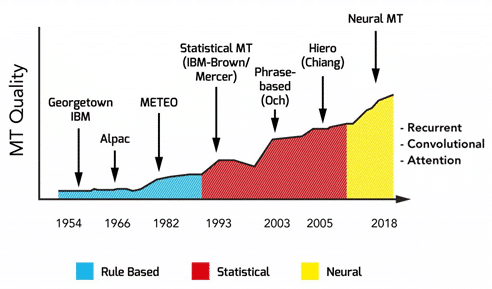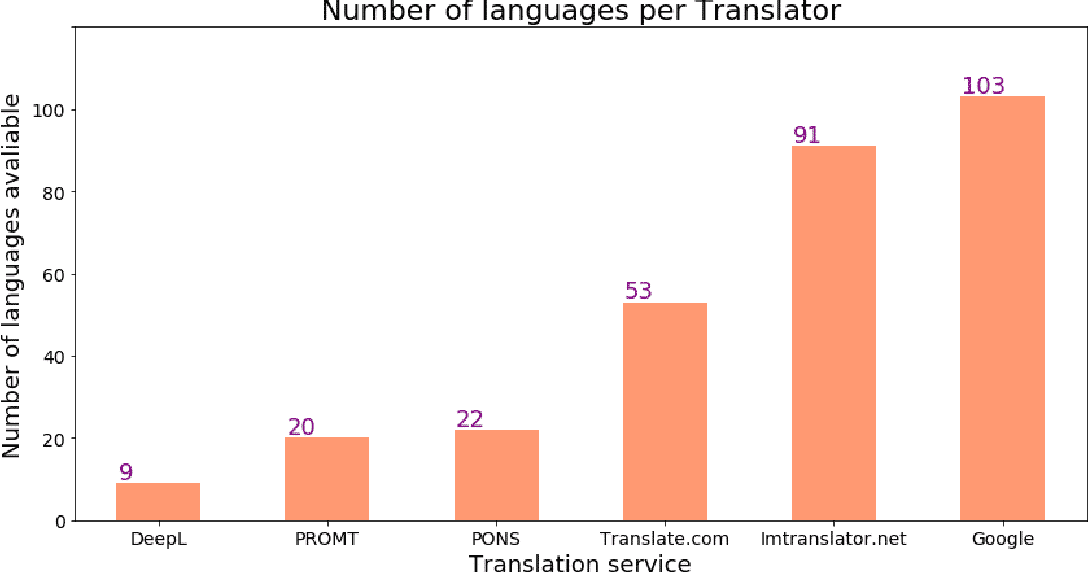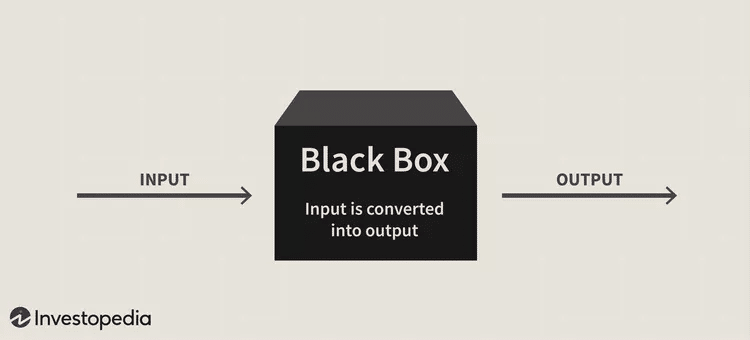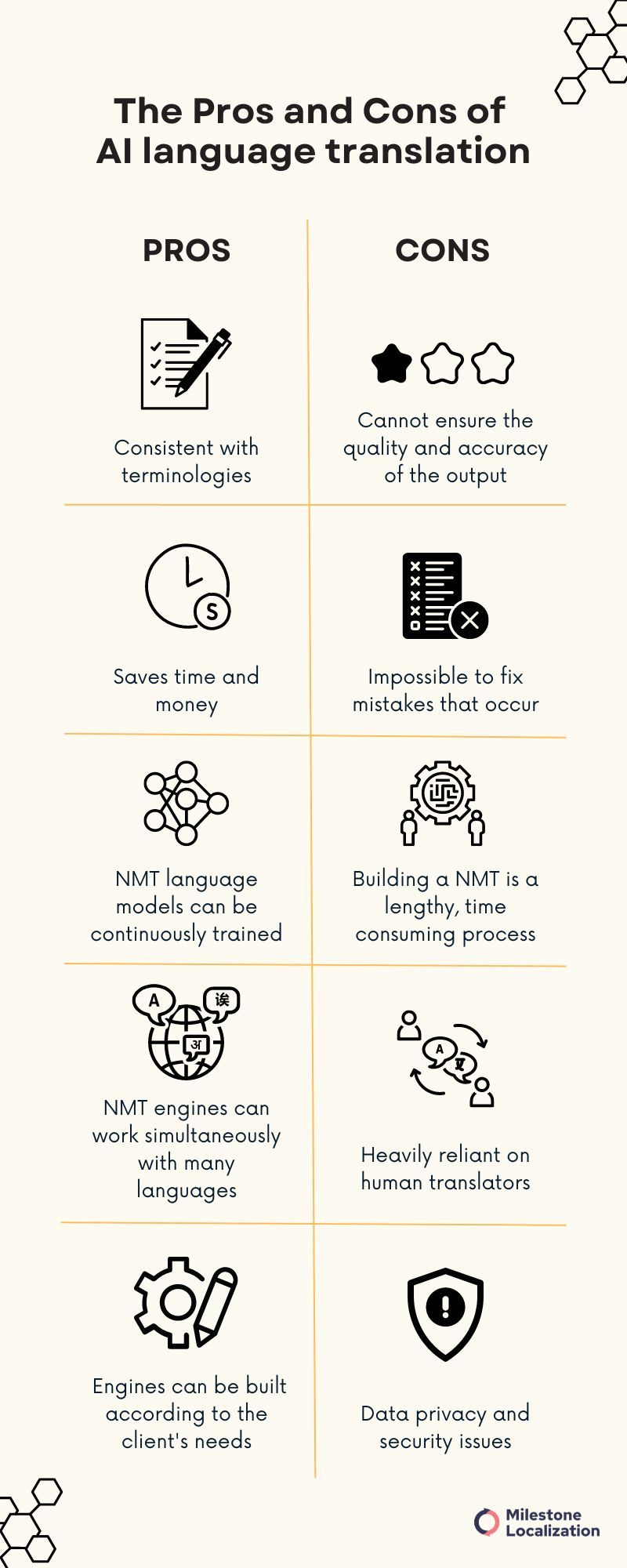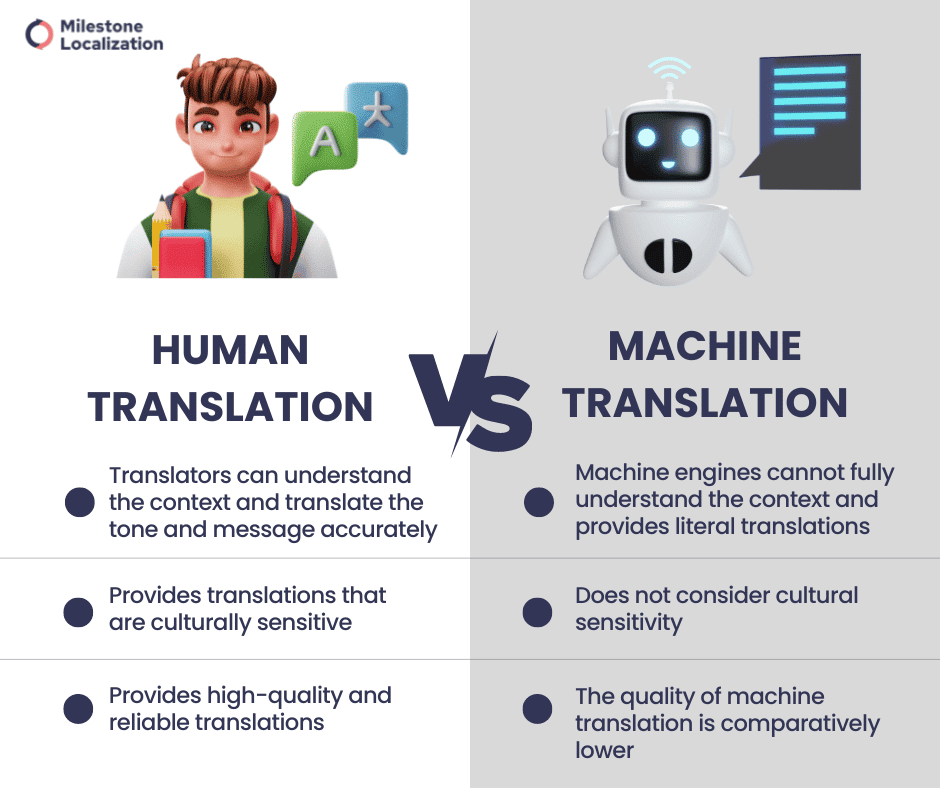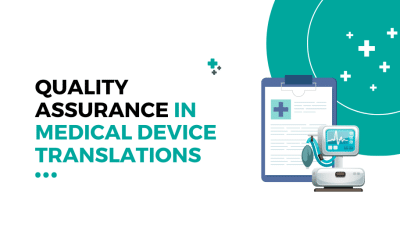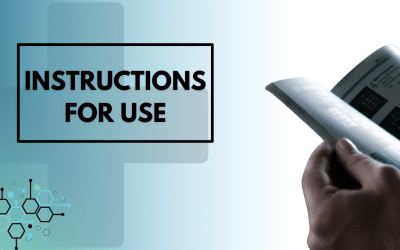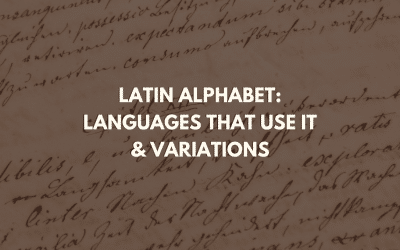Artificial intelligence (AI) is among the fastest-developing domains nowadays. Undoubtedly, AI will become even more ubiquitous in the upcoming years.
This new technology has in the last decade found its way into various domains, such as finance, medicine, the Internet, and, last but not least, translation.
We have all had a chuckle over an innocent Google Translate fail. Yet we cannot deny that in recent years machine translation has improved drastically, and apps such as Google Translate are now able to translate any text, regardless if it’s a PDF document, the menu in a restaurant, or even speech.
Machine translation (MT) has been around since the mid-20th century. However, thanks to AI implementation, MT is now much faster, cheaper, and more accurate than ever before.
This raises the question: Will AI replace human translators in the future?
If you want to find out the answer to this question, keep reading!
In the following blog, we will cover topics such as AI language translation development, the pros and cons of MT, and more.
The current state of AI language translation
MT existed long before AI, yet it was AI and deep learning algorithms that expedited the recent advancements of MT technology.
MT might not have been capable of doing what it does today without the help of neural networks and AI, which mimic how a human brain ‘learns’ and ‘thinks’.
Due to a lack of support from the scientific community as well as limited funding in the past, AI language translation technology has experienced certain delays in its development. Still, MT and AI have become integral parts of the translation industry nowadays.
Memsource CEO David Čaněk recently stated during SlatorCon that 2020 marked the first year Machine Translation Post Editing (MTPE) was rendered the dominant method of translation in the industry.
In addition, the leading free translation tools, such as Google Translate, Bing Microsoft Translator, DeepL, Reverso Translation, etc., have adopted the NMT technology.
Also read: Machine Translation Post Editing: Everything You Need To Know
Indeed, ample funding can ensure breakthroughs in AI language translation technology in the upcoming decades.
Chat GPT and translation
The rise of AI and natural language processing has aided in the development of new software for content creation – Chat GPT, or chat-based generative pre-trained transformers.
This powerful AI language model is capable of producing human-like text. This new technology is also capable of understanding human language.
Understanding how large language models work is essential in leveraging AI for tasks like language translation, where the model’s ability to interpret and generate human-like text plays a crucial role in accuracy and relevance.
Its incredible capacities make it increasingly useful among content marketers, localization experts, and translators.
Chat GPT can quickly generate high-quality content, which makes it perfect for anyone who needs to produce large volumes of content in a limited amount of time.
All this can be done by simply providing the model with a prompt.
With the help of Chat GPT, marketers easily produce blog articles, web pages, and social media posts that are even optimized for search engines. SEO has become essential if you want your content to rank higher in search engine results since it can help increase website traffic.
Also read: Are Translation APIs and Connectors Right Choice For Your Business?
Chat GPT is beneficial to the translation and localization industries as well. For instance, these language models can quickly translate text from one source language to another, allowing translators to focus on the accuracy and cultural relevance of the content.
When it comes to localization, Chat GPT can generate content that is specifically tailored to the needs of a specific audience. One simply has to provide the model with some context about the target audience, and the AI does its magic, producing engaging and culturally relevant content.
All in all, Chat GPT brings about a lot of benefits to the translation and localization industry. It has the potential to completely revolutionize content creation due to its ability to generate high-quality content in a short amount of time that is also SEO optimized, culturally relevant, and engaging for the audience.
Also read: Top Qualities Of A Good Translation
The potential of AI language translation
Thanks to the rapidly advancing field of neural networks, machine translation engines are now becoming faster and smarter. By collecting, analyzing, and interpreting billions of pieces of data, neural machine translation (NMT) engines are now able to quickly translate not only written text but also speech.
In addition, this new neural language model, compared to its ancestor’s rule-based translation models, can learn the language similar to the way humans do and thus can produce much more natural human-like output.
To this day, NMT is the most advanced translation technology to ever exist. It outperforms any other technology in terms of contextual and grammatical accuracy.
Neural networks and deep learning algorithms have revolutionized translation, allowing a more cost-efficient process that takes considerably less time.
Also read: Translation Memory: A Powerful Tool For Localization
Today, professional translators rely on MT to a great extent.
However, NMT has a long way to go as well.
Great efforts should be invested in improving the contextual and semantic interpretations of AI engines. The upcoming innovations, hence, will likely be focused on these aspects.
For instance, in the foreseeable future, it could be possible to select custom terminology glossaries, depending on the text that is translated. In this way, greater accuracy can be achieved, especially for texts that require a high degree of subject-matter expertise.
Another possible innovation is expected to be machine translation training. Currently, MT engines are trained before their implementation in the translation process. With the development of this technology, on-the-go engine training could be possible. This means that the engine will be able to learn during the translation process in real-time.
Also read: What Is Localization Software?
Benefits of AI language translation
Due to the numerous benefits of AI-based language translation, it has become a widely offered service by many agencies, while professional translators themselves rely heavily on this technology.
Here is a list of the main benefits of AI language translation.
Consistency
AI language translations are usually very consistent when it comes to terminology.
Studies have shown that importing terminology into the NMT model can significantly improve terminology consistency in the AI engine’s output.
Time and money
Of course, the biggest benefit of AI-based language translation is that it is cost- and time-efficient to generate translations for text, audio, and video.
In our globalized world, where new information constantly needs to be translated into numerous languages, this is a dream come true!
Also read: Localization & Translation Costs: Breakdown Of Factors Involved
Endless learning loop
NMT language models can be continuously trained with new data and even with human feedback, which in turn leads to a higher quality of the end translations. AI engines can also be trained with custom data sets or examples of other translations.
Since AI has no limits when it comes to its learning capacity, this means that AI translation engines can be constantly trained and improved.
Organizations can use hybrid cloud observability to ensure that their translation engines are always online and meet their performance expectations. For instance, organizations can automate, remediate, visualize, and observe their translation engine environments.
This is crucial when it comes to driving actionable insights, ensuring availability, and making the translation engines not only available for language translation but also for endless learning loops. In addition, getting these features is important in ensuring that any issues that might affect the performance of the translation engines are identified and taken care of in good time.
Numerous languages simultaneously
An NMT engine can work simultaneously with hundreds of languages.
This means that with a single engine, one can translate into numerous languages. This is a huge advantage since it allows you to quickly and easily translate content into different languages.
Built according to the client’s needs
An NMT-based translation engine can be built and trained according to the client’s needs and requirements.
For example, if the client needs an AI translation engine for medical content or medical software, the engine is trained with texts related to this domain. This ensures the high quality of the output.
While building an engine from scratch can be pretty expensive, such an investment can have huge returns in terms of the quality of the output.
Also Read: Top 10 Translation Companies In India
Partner with us for your next translation project
We provide high-quality Machine Translation Post Editing services as well as professional human translation services in Chinese, Japanese, Hindi, and 70+ languages.
Drawbacks of AI
AI and NMT have undergone massive improvements in the last decade. Nevertheless, this technology is still in its initial development.
Thus, AI translation models have several drawbacks that one should always take into consideration.
Accuracy
The biggest disadvantage of the AI translation models is that they cannot ensure accuracy. While the quality of that training data greatly impacts the quality of the output, it cannot ensure an entirely accurate translation.
Sometimes, even with the best training data, mistakes occur due to bugs in the neural networks themselves. These, however, are impossible to fix.
Impossible to fix mistakes
In reality, we don’t know how the ‘learning’ and the ‘neural networks’ operate and develop.
Scientists often call it ‘the black box effect’ because the engine is provided with data, and then it produces output. However, we don’t know what happens in between.
Thus, if mistakes occur in the end translations of an AI engine, there is no way we can fix them. What’s more, they are likely to recur over and over again.
Also read: 7 Reasons To Work With A Translation Company On Your Next Project
The lengthy and costly training process
In theory, building a NMT engine sounds easy.
In reality, however, this is a lengthy and energy-consuming process, which in turn increases its costs significantly.
To train an AI translation engine, one needs large sets of high-quality, bilingual data and extremely powerful computers. Furthermore, one needs developers and linguists to develop the machine itself.
Overall, building an engine from scratch is a huge investment, however, it will likely pay dividends over time.
Dependent on human translators
An AI translation engine can handle hundreds of languages simultaneously, however, it cannot differentiate between dialects, social context, the audience needs, and cultural aspects of a text.
This is why this technology is heavily reliant on human translators, who can revise and edit the NMT output for more precision and clarity.
Privacy and confidentiality issues
Data privacy and confidentiality have always been issues for AI-based translation models. Especially when it comes to free AI translation tools, which are unlikely to follow any standards of data privacy and security.
Integrating robust data protection and anonymization of the data, however, is possible, but this will significantly increase the initial price of the engine.
Also read: CAT Tool: Features and Benefits – Why Every LSP and Translator Should Use One?
The role of human translators in the age of AI language translation
While it is truly amazing what AI language translation models can do, we need to understand that this technology is still in its infancy.
What’s more, we have to be realistic about its capabilities. Yes, this technology can be cost and time effective, but it does not ensure accuracy.
Thus, human translators are and will continue to be needed to oversee the translation process in terms of context and accuracy.
Indeed, human translators are essential since only they can ensure that the correct grammar, style, tone, and language variety/ dialect are used.
In other words, MT and AI will not replace human translators anytime soon.
In fact, despite the massive recent advancement in AI technology, when juxtaposed, human translations outperform NMT output massively, leaving no room for doubt about who is the better translator.
What’s more, linguists will always be needed to build, train, and maintain the NMT translation engines.
The NMT technology is very sensitive to mistakes, so even the tiniest error in the training data sets can cause discrepancies in the output. Thus, professional linguists will always be needed to edit and arrange the data sets so that the engines can perform smoothly.
Most importantly, however, companies increasingly turn to both human translators and machines. This refers to Machine Translation Post Editing (MTPE) or the process of translating the content with the NMT engine and then having a human translator edit it.
In this way, better results in terms of costs and delivery time can be achieved.
Conclusion
AI language translation technology has undergone some massive advances in recent years, however, it is still developing.
Thus, NMT engines cannot guarantee high-quality, accurate translations.
A possible solution, on the other hand, can be MTPE, a service that has become widely accessible. Professional translators, at the same time, are also accepting this new AI-based translation technology in their work, making the translation process more efficient and shorter.
Partner with us for your translation project
We provide high-quality Machine Translation Post Editing services as well as professional human translation services in Chinese, Japanese, Hindi, and 70+ languages.

